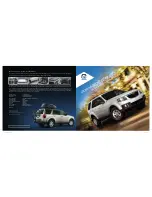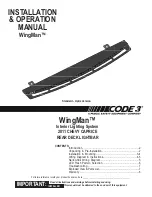
WWW.MANUALS.WS
WWW.MANUALS.WS
151
1. Rinse off loose dirt with a hose. Re-
move any mud or road salt from the
underside of the vehicle or in the wheel
wells.
2. Wash with a mild car-wash soap,
mixed according to the manufacturer’s
instructions. Use a soft cotton mit and
keep it wet by dipping it frequently into
the wash water. Do not rub hard—let
the soap and water remove the dirt.
Aluminum wheels: Use only a mild soap or
neutral detergent.
Plastic bumpers: Wash carefully. Do not
scrub with abrasive cleaners. The bumper
faces are soft.
Road tar: Remove with turpentine or
cleaners that are marked safe for painted
surfaces.
Do not use gasoline or strong sol-
vents, which may be toxic or cause
damage.
NOTICE
3. Rinse thoroughly—dried soap can
cause streaking. In hot weather you
may need to rinse each section right
after you wash it.
4. To prevent water spots, dry the vehicle
using a clean soft cotton towel. Do not
rub or press hard—you might scratch
the paint.
Automatic car wash
Your vehicle may be washed in an auto-
matic car wash, but remember that the
paint can be scratched by some type of
brushes, unfiltered washing water, or the
washing process itself. Scratching re-
duces paint durability and gloss, especial-
ly on darker colors. The manager of the
car wash should be able to advise you
whether the process is safe for the paint
on your vehicle.
To prevent damage to the antenna,
make sure it is retracted before driv-
ing your Toyota through an auto-
matic car wash.
NOTICE
Waxing your Toyota
Polishing and waxing is recommend-
ed to maintain the original beauty of
your Toyota’s finish.
Once a month or if the vehicle does not re-
pel water well, apply wax.
1. Always wash and dry the vehicle be-
fore you begin waxing, even if you are
using a combined cleaner and wax.
2. Use a good quality polish and wax. If
the finish has become extremely
weathered, use a car-cleaning polish,
followed by a separate wax. Carefully
follow the manufacturer’s instructions
and precautions. Be sure to polish and
wax the chrome trim as well as the
paint.
3. Wax the vehicle again when water
does not bead but remains on the sur-
face in large patches.
Always remove the plastic bumpers
if your vehicle is re-painted and
placed in a high heat paint waxing
booth. High temperatures could
damage the bumpers.
NOTICE
















































